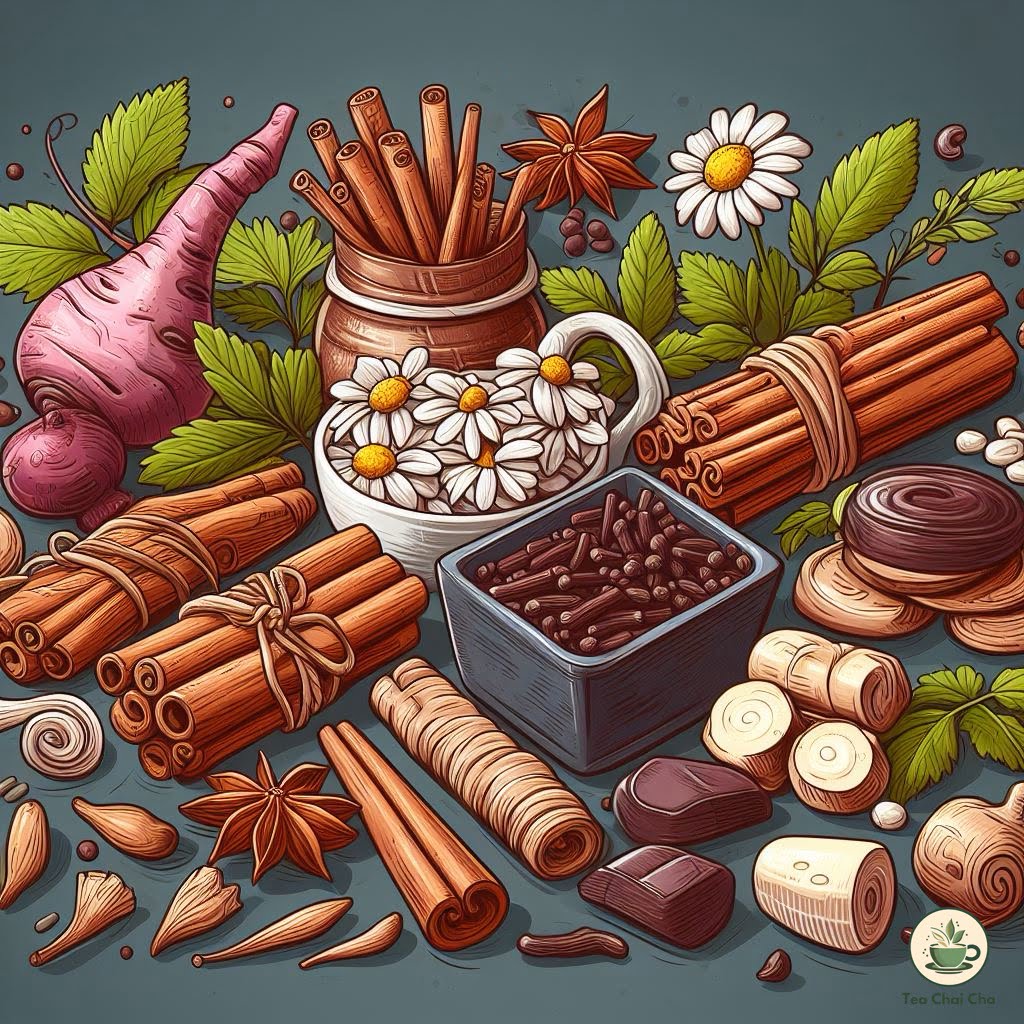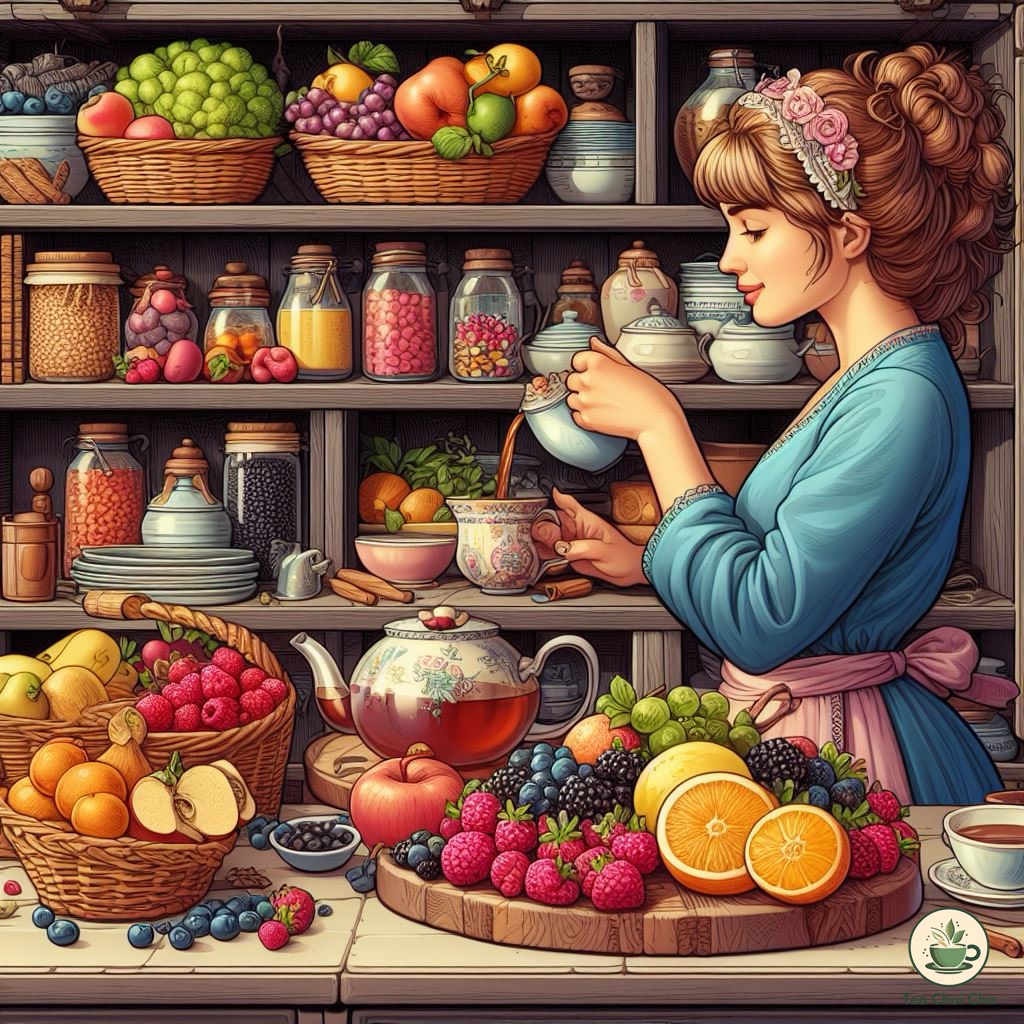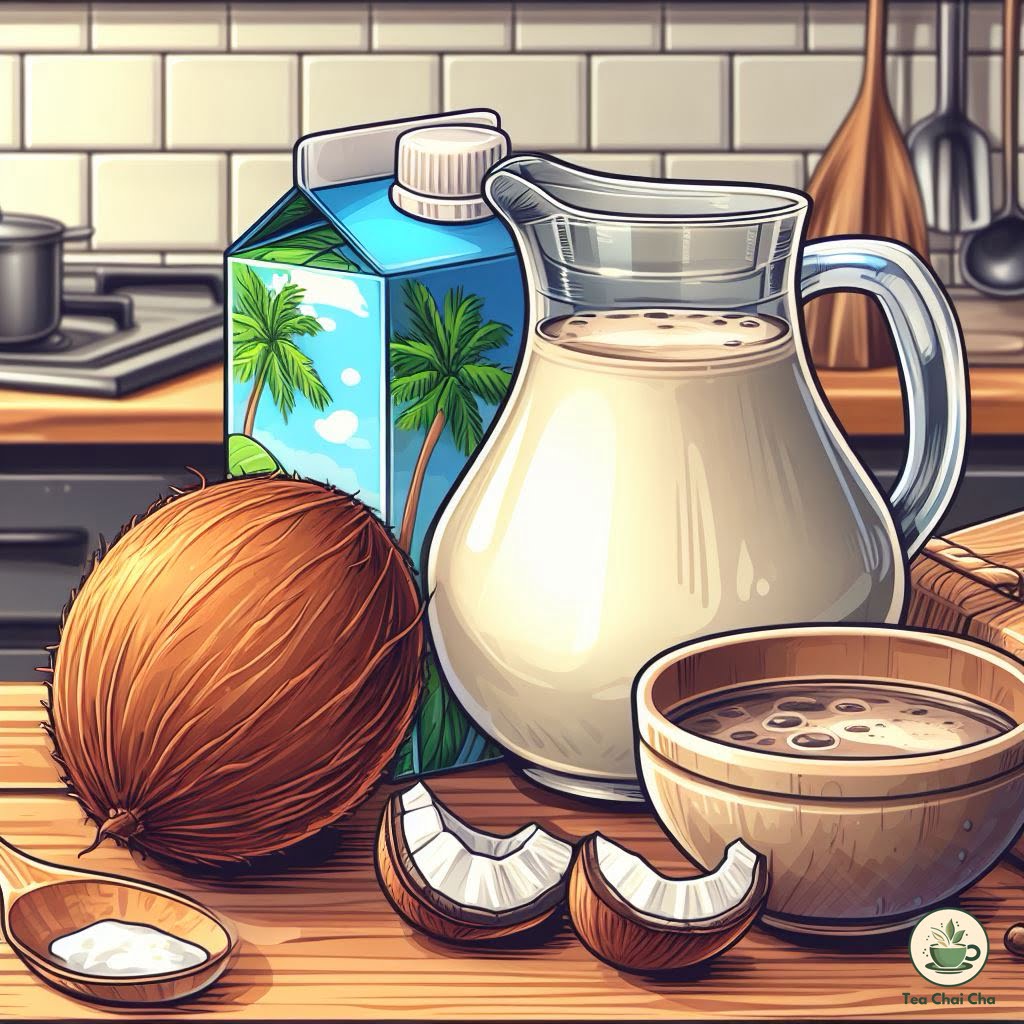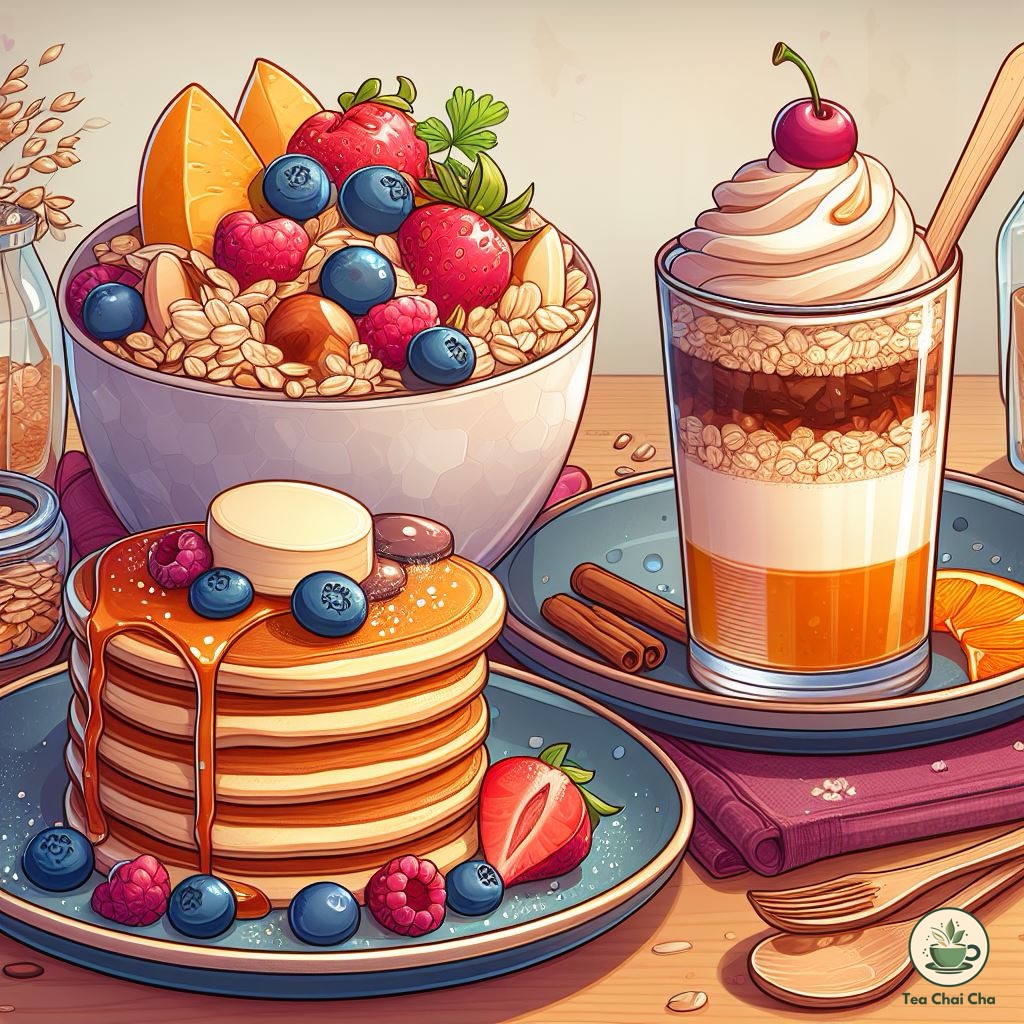Tea – an aromatic beverage, a daily ritual, a pick-me-up, a comforting warm hug in a cup.
But are you truly experiencing the full range of flavors that your tea can offer?
Are you aware of the magical transformation that a simple ingredient can bring to your ordinary cup of tea?
If not, this blog post is a treasure trove waiting to be discovered!
Whether you find your tea just a bit too bland or you’re looking for ways to jazz up your usual brew, stick with me!
Understanding The Basics of Good Tea
Creating a tantalizing cup of tea starts with the very basics: your selection of tea leaves and the quality of water used.
1. Selecting Quality Tea Leaves
To ensure the best tasting tea:
-> Always opt for high-quality tea leaves.
They should have a vibrant appearance and a fragrant aroma.
-> Avoid tea leaves that are dull or stale-smelling.
-> Consider shopping from specialty tea shops or online tea retailers.
These platforms often provide a vast selection and valuable advice.
-> Remember, the better the tea leaves, the more superior your tea will taste.
2. The Impact of Water Quality on Tea
The quality of your water can significantly influence your tea’s flavor:
-> Always use fresh, pure water free from any unpleasant odors or flavors.
-> Tap water, which often contains chlorine and other chemicals, might hinder the taste of your tea.
Filtered or bottled water is a better alternative.
Perfecting Your Tea Brewing Techniques
With the right tea leaves and water, you’re halfway there. Next, let’s turn our attention to perfecting your tea brewing techniques.
3. Mastering the Water Temperature
Different types of tea require different water temperatures. Here are some tips:
-> Green and white teas prefer cooler temperatures, while black and oolong teas can handle hotter water.
-> Use a thermometer for accuracy or learn the visual cues for different water temperatures.
-> Ensuring the correct temperature will help extract the best flavors from your tea leaves.
4. Timing is Everything: Steeping 101
The steeping time is equally critical for the perfect brew:
-> Green and white teas usually require a shorter steeping time, while black and oolong teas benefit from a bit longer.
-> The size of your tea leaves can also affect the steeping time – larger leaves generally require more time.
-> Oversteeping can make your tea bitter, while understeeping can result in a weak brew.
Delightful Additions to Improve Your Tea Taste
Adding a new dimension to your tea drinking experience doesn’t require a magic spell or secret recipe.
Whether you’re a fan of traditional tea or prefer your cup with a twist, there’s a world of flavors waiting to be discovered!

5. Sweeten Your Brew: From Sugar to Honey and Beyond
The allure of a sweetened cup of tea is undeniable.
Sweetness, when added mindfully, has the ability to enhance the inherent flavors of your tea, making it a delight to sip on.
But what are the best sweeteners for your tea? Let’s find out:
- Sugar: The classic sweetener. Add 1-2 teaspoons per cup, depending on your preference.
- Honey: A healthier option with a hint of floral taste. Start with a teaspoon and adjust to taste.
- Maple syrup: Adds a slightly woody and caramel flavor. Use sparingly due to its strong flavor.
- Agave syrup: A vegan-friendly sweetener with a neutral taste. Use 1-2 teaspoons per cup.
- Stevia: Calorie-free, plant-based sweetener. Use as per the manufacturer’s instructions as it’s usually much sweeter than sugar.
Experiment with these sweeteners to find the perfect balance that suits your palate.
Also read – How to Make Green Tea Taste Good

6. The Magic of Spices and Herbs in Tea Taste
Adding spices and herbs to your tea can take it from ordinary to extraordinary.
They add a whole new layer of complexity and warmth, perfect for a cozy night in or a cold winter day.
Let’s explore some favorites:
- Cinnamon: Adds a sweet and spicy kick. Try a small stick per pot of tea.
- Cardamom: Brings a unique spicy-sweet taste. Crush 1-2 pods and add them to your brew.
- Ginger: Boosts the tea with its sharp, spicy flavor. A few slices will do the trick.
- Cloves: Adds a warm and sweet taste. Start with 2-3 cloves per pot.
- Black pepper: For a surprising kick of spice. Just a pinch can make a difference.
Remember, everyone’s palate is different. It’s all about finding the right balance that appeals to you.

7. Enhancing Your Tea with Fruits and Citrus
Fruits can add a refreshing twist to your tea.
The natural sweetness and zestiness of fruits can make your brew more enjoyable, especially during the warmer months.
- Lemon: Adds a tangy flavor and enhances the tea’s aroma. A slice or two is all you need. Want to try Lemon Tea? Here’s the recipe!
- Apple: Can sweeten the tea naturally and add a juicy flavor. Try adding a few slices or a spoonful of apple juice. Ever savored Apple Tea? Try it now with this recipe!
- Berries: They can provide a tart or sweet note depending on the type. A handful of fresh or frozen berries can be a wonderful addition. Looking for a burst of berries in your tea? Try this Berry Blast and Blueberry Burst tea recipe!
- Peach: Adds a sweet and floral flavor to your tea. A few slices will do the trick.
Why not try making a fruit-infused iced tea?
Simply add your choice of fruits to the tea while it’s still hot, let it steep, and then chill. A refreshing treat!

8. Role of Milk and Non-Dairy Alternatives in Tea Flavor
Whether you’re a fan of classic milk tea or you’re exploring non-dairy alternatives, these creamy additions can add body and texture to your tea.
- Milk: Traditional and comforting. Use 1-2 tablespoons per cup, or to taste.
- Almond milk: Adds a slight nutty flavor. Same as regular milk.
- Soy milk: Its creamy texture pairs well with strong teas. Use it in the same quantity as regular milk.
- Oat milk: Provides a subtle sweetness and creamy texture. Again, use as per your taste.
- Coconut milk: Adds a tropical note to your tea. Use sparingly due to its strong flavor.
It’s crucial to heat your milk or alternative before adding to your tea to avoid curdling.

9. Pairing Your Tea with Delicious Treats
Tea and treats go hand in hand!
The right pairing can complement the flavors of your tea and make your tea-time a delightful experience.
Here are some classic tea and treat combinations that never fail:
- Black Tea: Its robust flavor pairs well with hearty foods. Try black tea with a buttery croissant or a slice of rich chocolate cake.
- Green Tea: The delicate and sometimes grassy flavor of green tea goes well with light, subtly flavored treats. Consider pairing it with rice cakes or a simple biscotti.
- Herbal Tea: The varied flavors of herbal teas pair well with a variety of treats. For example, mint tea pairs well with dark chocolate, and chamomile tea goes well with shortbread cookies.
- Chai Tea: With its blend of spices, Chai tea pairs wonderfully with spicy snacks, such as Indian samosas or savory biscuits.
Experiment with these pairings or create your own to enhance your tea experience!
10. Creative Ways to Make Your Tea Taste Better
While a traditional cup of tea is always comforting, don’t be afraid to get creative and add your own touch to your brew:
- Infused Ice Cubes: Freeze fruits or herbs in your ice cube tray and use these cubes to cool your iced tea. They’ll slowly infuse your tea with their flavors.
- Tea Cocktails: Blend your favorite tea with some fruit juice, sweetener, and maybe even a splash of your favorite spirits for an adult version!
- Tea Lattes: Make a tea latte by brewing a strong cup of tea and adding frothed milk and a sweetener of your choice.
- Brew with Other Teas: Mix two types of tea leaves for a unique blend. Green tea and mint, for example, make for a refreshing combination.
These are just a few ideas.
Feel free to explore and create your own unique tea traditions!
Related Guides
Frequently Asked Questions (FAQs)
How to make tea taste better without sugar?
Try using natural sweeteners like honey or stevia. Alternatively, adding a slice of fresh fruit or a dash of spices like cinnamon or vanilla can enhance the flavor without adding sugar.
How to make green tea taste better?
Brew at a lower temperature (160-180°F) to avoid bitterness. Enhance the flavor with a squeeze of lemon or a few fresh mint leaves.
How to make chamomile tea taste better?
Try adding a slice of apple or a drizzle of honey. Brewing chamomile with other herbs like lavender can also enhance its flavor.
How to make raspberry leaf tea taste better?
Sweeten raspberry leaf tea with a bit of honey or mix it with other flavorful teas like hibiscus or peppermint.
How to make peppermint tea taste better?
Balance the strong flavor of peppermint with a bit of honey or lemon. Mixing it with green tea can also create a refreshing blend.
How to make dandelion tea taste better?
Enhance the earthy flavor of dandelion tea with a slice of lemon, a touch of honey, or some warming spices like ginger or cinnamon.
How to make ginger tea taste better?
Sweeten ginger tea with honey and add a squeeze of lemon for a bright, refreshing flavor. A pinch of turmeric can also add depth.
How to make Twisted tea taste better?
Enhance the flavor of Twisted tea by adding fresh fruit slices or a splash of flavored syrup. Chilling it in the fridge before serving can also improve the taste.
